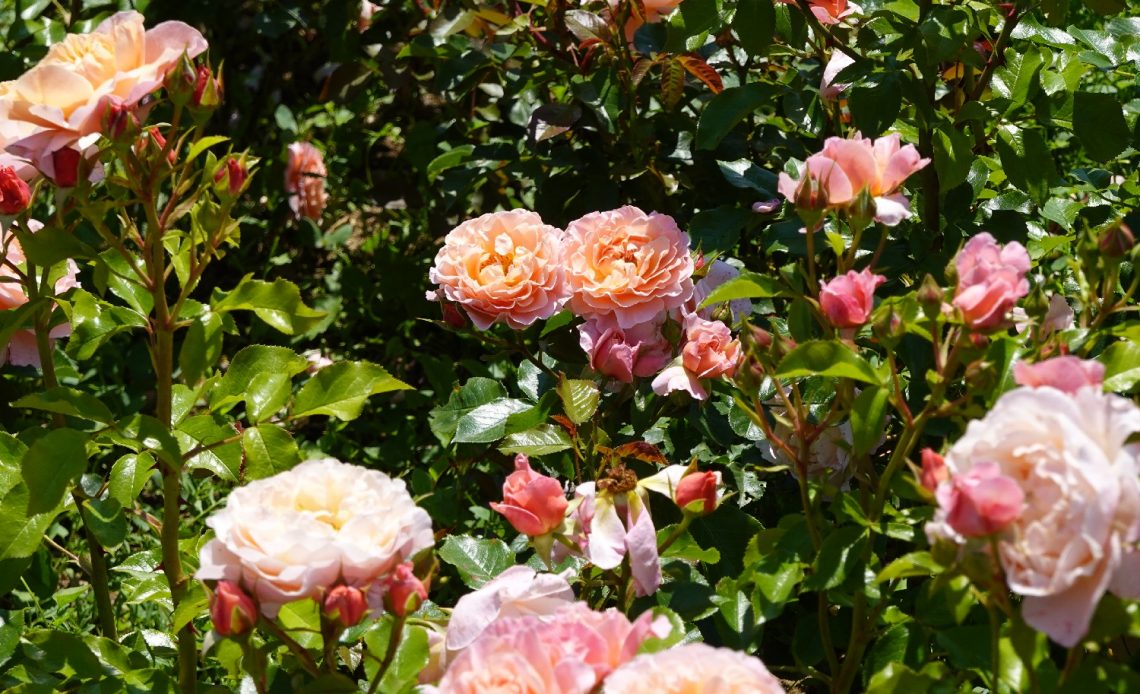

We’re here to help! Wild Yards is a completely free website that is 100% dedicated to helping you create a wildlife-friendly, sustainable yard. Read more
WildYards is reader-supported. When you buy a product through a link on our site, we may earn a comission. Every product is independently selected by our (obsessive) editors and our reviews are unbiased and objective. Read more about our mission or our privacy policy.
Common yet enchanting, caring for roses can take some work – they need plenty of sunlight, rich, moist soil, and general protection from pests. By growing the right plants alongside, you may find it easier to keep your roses smelling wonderful. But, what are some rose companion plants worth cultivating?
Plants such as lavender, foxgloves, and Shasta daisies make perfect companions for roses. They thrive in similar conditions and may help protect your roses against unwanted visitors. There are plenty of other plants to add to the mix, too – and some you’ll want to avoid growing with roses if you can help it.
Why is it worth growing rose companion plants?
It’s not only an aesthetic choice to grow a variety of different species alongside your roses – as other specimens can help to keep your blooms healthy. For example, roses can attract a host of detrimental interest from garden pests such as aphids and growing geraniums alongside your roses can reduce aphid interest, as their scent naturally repels them. Growing companions around and alongside your roses gives them extra ‘safety in numbers’.
Roses can be sensitive plants that sometimes require a little helping hand in growing stronger and attracting regular pollinators. Rose flowers are typically double-layered, providing tricky for some visiting animals to feed from. Great companion plants for roses include those that act as ‘wingmen’ – as they can get overlooked by birds, bees, and butterflies in favor of brighter, more fragrant specimens elsewhere.
Adding the right companion plants to your rose garden will help their flowers persist for longer across the growing season. By taking inventory of plants that may be restricting your roses with regard to water and available sunlight, you can move potentially aggressive and detrimental neighbors to more suitable pots, beds, and containers.
12 Rose Companion Plants
While roses are famously sensitive to competition from various blooms, the following companion plants provide fantastic company and protection for the species.
Lavender
Lavender is ideal for deterring certain pests and preventing garden visitors from munching on your prized roses. Deer, in particular, tend to enjoy eating roses if available – but will be easily deterred by lavender’s strong, strange scent. You may benefit from protecting your roses against rabbits with these blooms, too.
Lavender will do wonders for attracting all of the beneficial pollinators you’ll want around your roses, too – such as bees, butterflies, and hummingbirds. While roses can struggle to appeal to some pollinators thanks to their complex flowers, lavender often acts as the perfect ‘promoter’ to drum up interest.
Lavender and roses don’t always agree on soil pH (with the latter preferring much more acidic growth mediums), but it’s otherwise a tried-and-tested relationship.
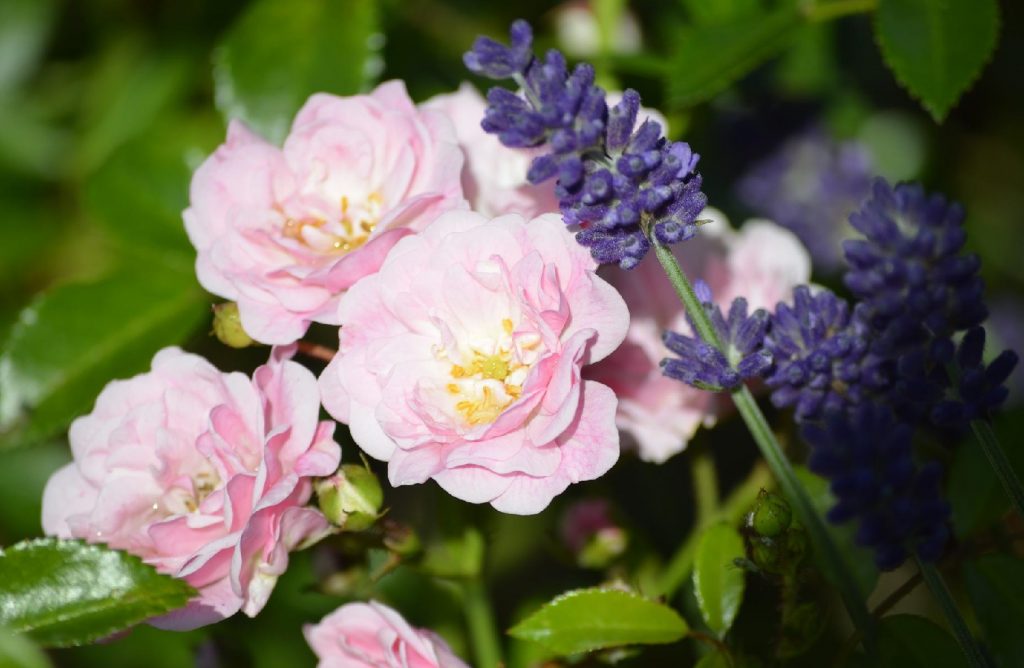
Foxgloves
If your garden beds are overrun with slugs and you want to keep your roses safe, planting a few foxgloves will offer a fantastic natural deterrent.
Given that roses with complex double flowers can frequently deter some pollinators, foxgloves are just as bold and are frequently easier for bees and butterflies to feed from. Much like lavender, this species is ideal for helping to boost the average rose’s appeal.
Do take caution – while foxgloves have their benefits and are delightful to look at – they are also quite dangerous plants to have around, as they are highly poisonous to both people and pets. Consider growing snapdragons as a safer yet similar-looking alternative.
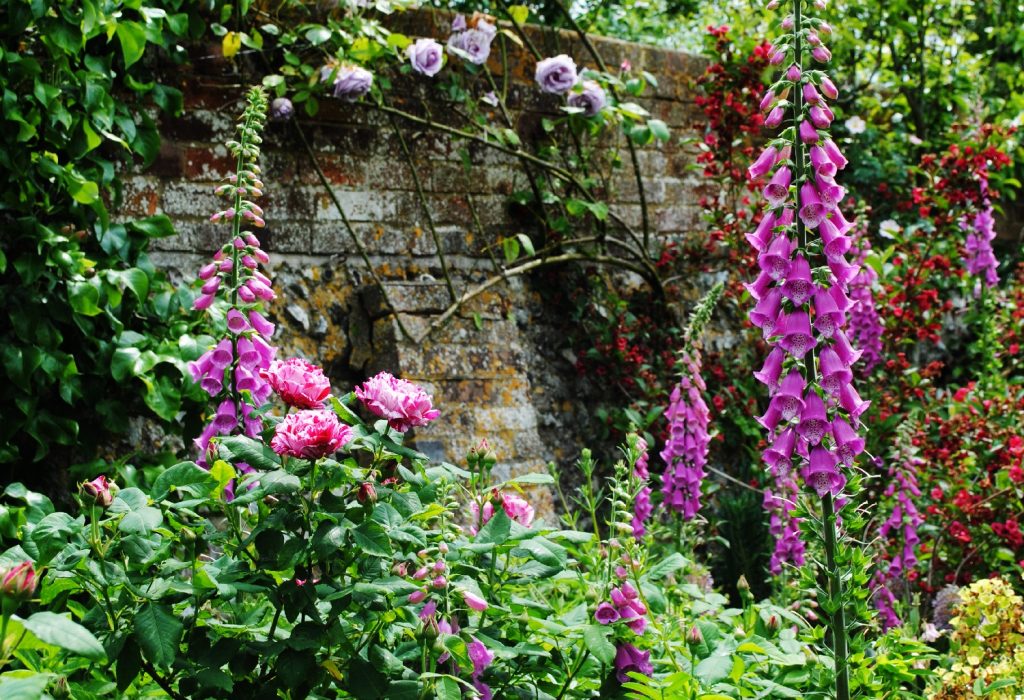
Shasta Daisies
Planting shasta daisies with roses is a great way to deter larger animals who are likely to munch on the latter. This species of daisy is toxic to many mammals, including deer and rabbits – many have thus evolved to avoid them altogether. Planting your roses within a cluster of shastas will likely stave off much hungry interest.
Providing you keep water and sunlight stable for these plants, they can be effortless to complement sensitive species of rose.
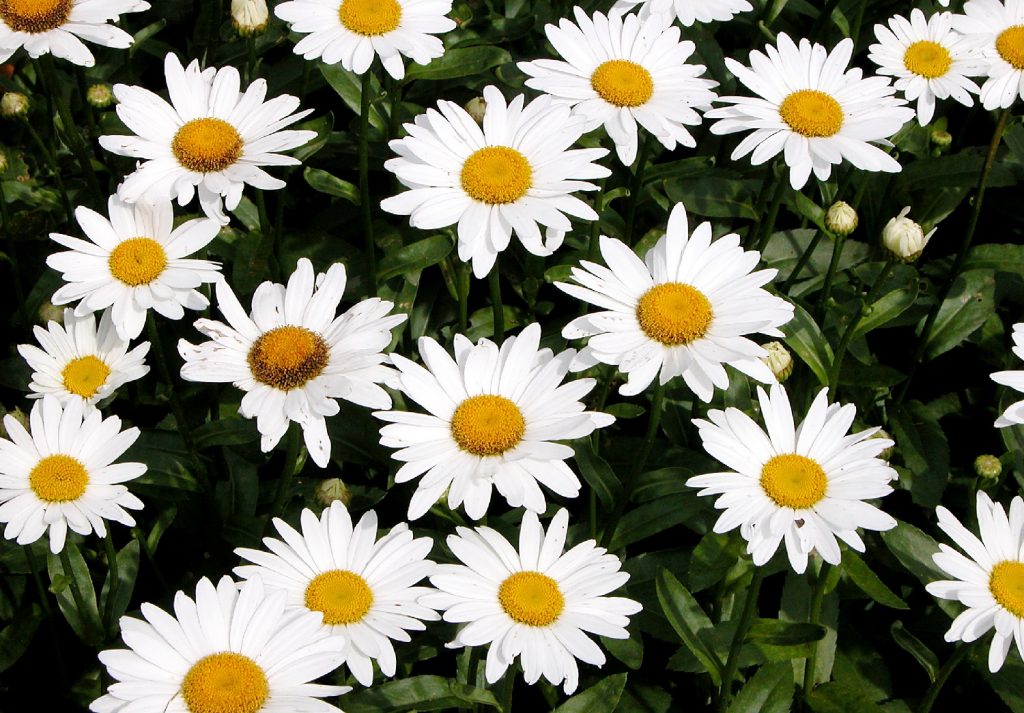
Snapdragons
Snapdragons are big winners with popular pollinators – butterflies and hummingbirds, in particular, love these colorful plants that make perfect foxglove alternatives. Despite their dramatic appearance, snapdragons are ideal for growing in the background of your rose bed.
As with lavender, the snapdragon is a great rose companion as it will normally attract more pollinators – such as butterflies – from afar. For all the average species of rose is eye-catching and fragrant, it sometimes needs a helping hand in grabbing the attention of roaming insects and birds. Snapdragons will act much like attractive beacons to help pollinators find roses more easily.
Caution – snapdragons largely flower at different times than roses – and are just as susceptible to bugs and pests – meaning this is a relationship you’ll need to balance carefully.
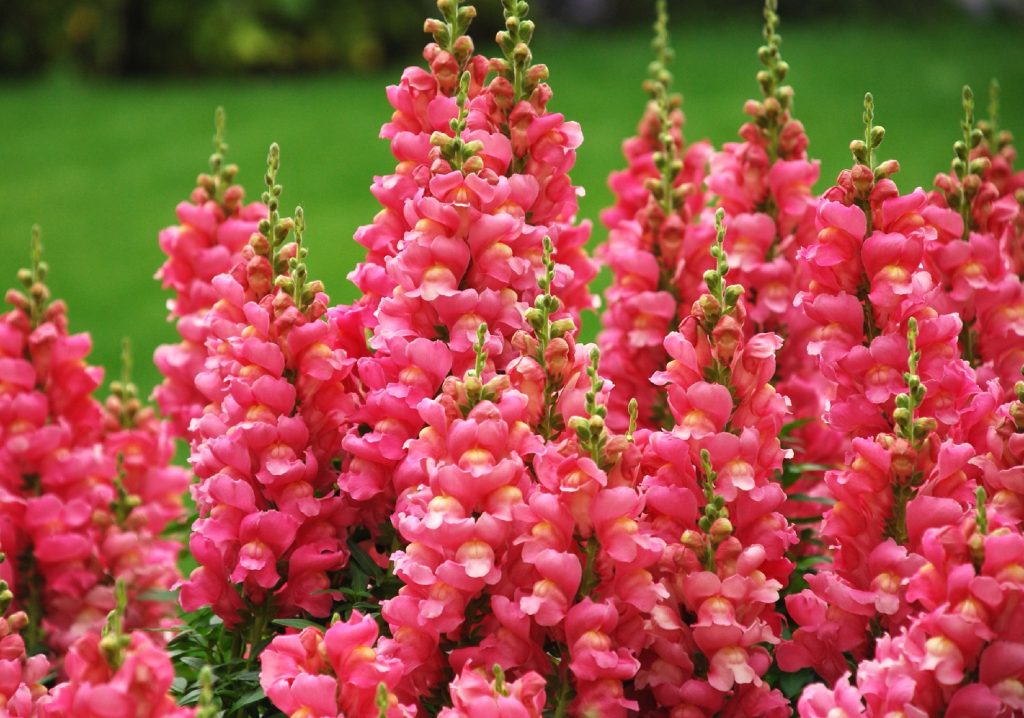
Marigolds
Marigolds are some of the best ‘wingmen’ for roses that may struggle to bring in pollinators. Their bright, bushy heads attract all kinds of beneficial insects to your garden, with most species of butterflies likely to take a keen interest.
Marigolds are also known for keeping some rose-munching animals away. Deer, in particular, tend to steer clear of the marigold’s strong scent.
You may only need to water this undemanding plant once a week – and in return, they’ll keep invasive worms from eating away at your roses. The marigold is particularly useful at staving off attacks from aphids and nematodes, for example.
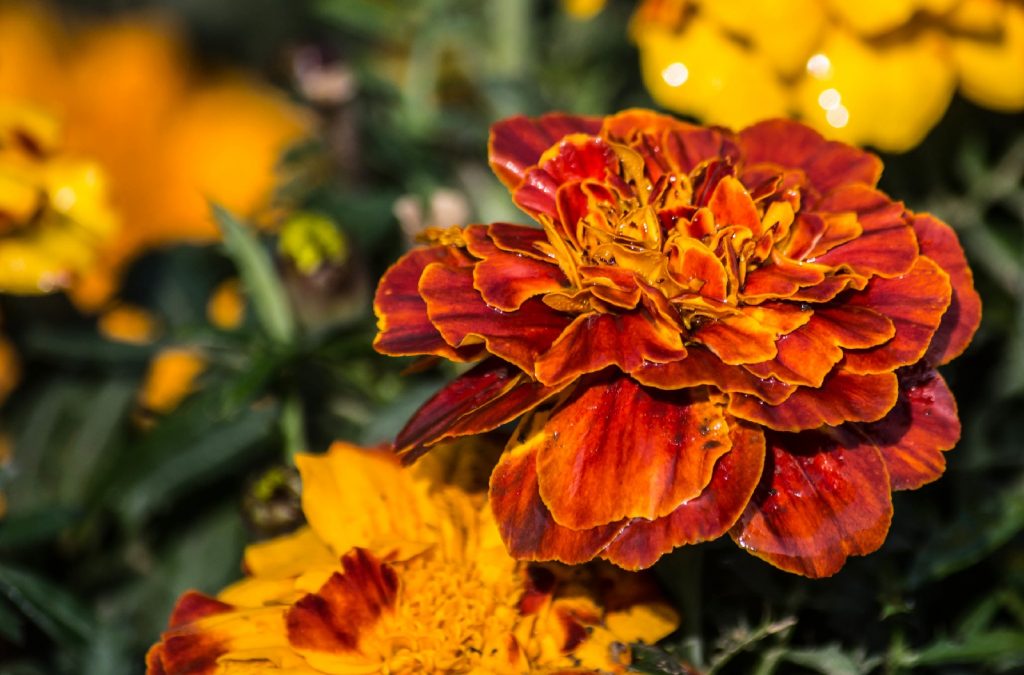
Geraniums
Geraniums are typically great for pairing with roses, but the hardy or Cranesbill variety offers the most effective pest-repellent benefits through companionship.
Geraniums are fantastic for fighting invasive, destructive insects such as beetles and aphids. Given that these insects commonly disturb and even damage roses, mixing in a few geraniums will help to protect your sensitive blooms – though you can still expect frequent butterfly visitors for pollination.
Some species are evergreen – meaning you can continue to help your garden smell sweet long after roses have died away from the year.
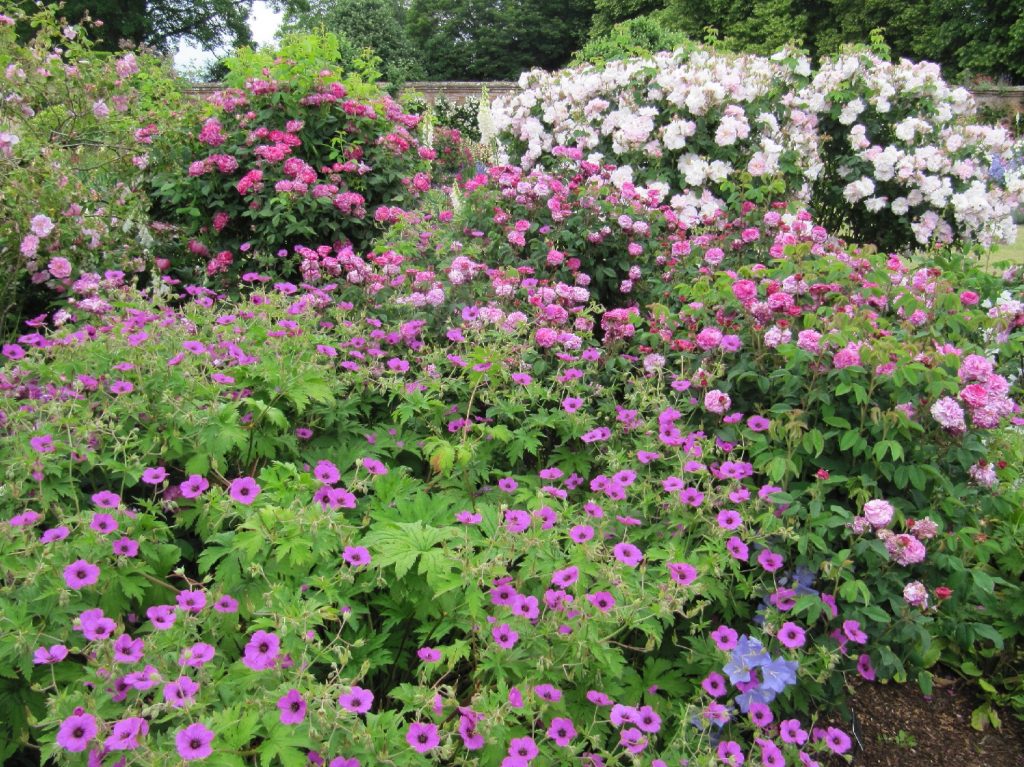
Sage
Much like the Cranesbill geranium, most types of sage are highly beneficial for deterring aphids and beetles from your roses. Sage is commonly grown alongside roses to create decorative borders.
Sage is particularly drought-resistant, meaning it can continue attracting pollinators such as hummingbirds, bees, and butterflies when roses may be struggling to make an impact. Most types of salvia have dual roles as guardians and promoters and are generally easy to maintain alongside common roses.
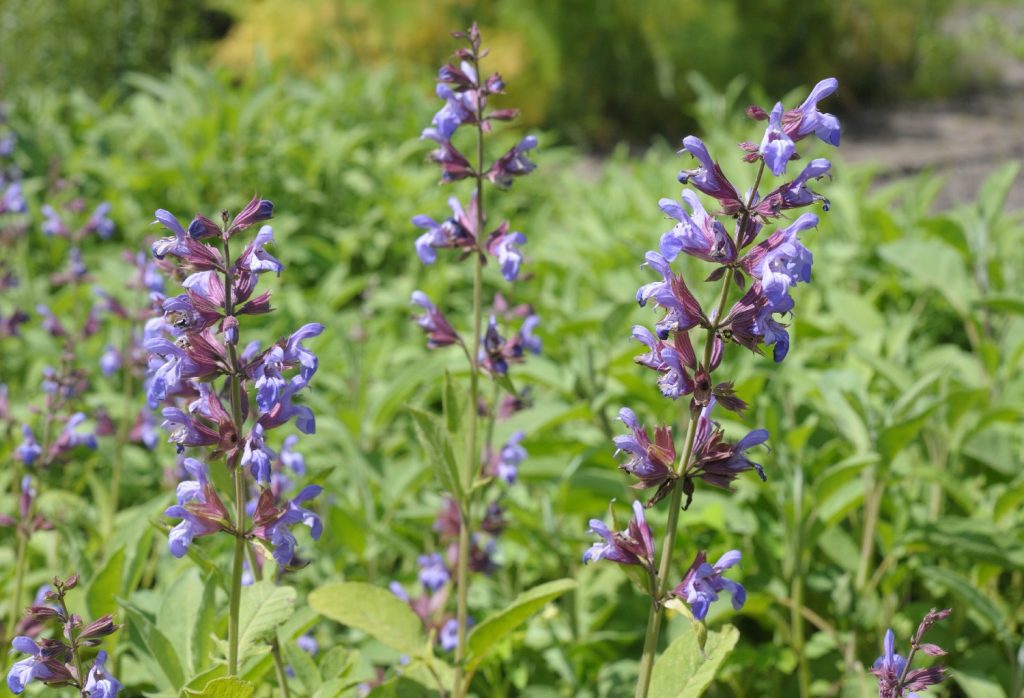
Alliums
The allium is perhaps the best rose defender you can grow – as it can help to deter aphid attacks and may even help to stave off black spot, a fungus that can cause severe damage to most rose species.
Provided your soil drains well, and you’re growing out in the open sunshine, these plants will accompany your roses and guard them against nasty diseases for months to come – you can expect the same results from other onion plants, including wild garlic.
Allium is popular with many gardeners as it flowers from early to mid-spring, providing ready pest protection long before rose heads start emerging.
Yarrow
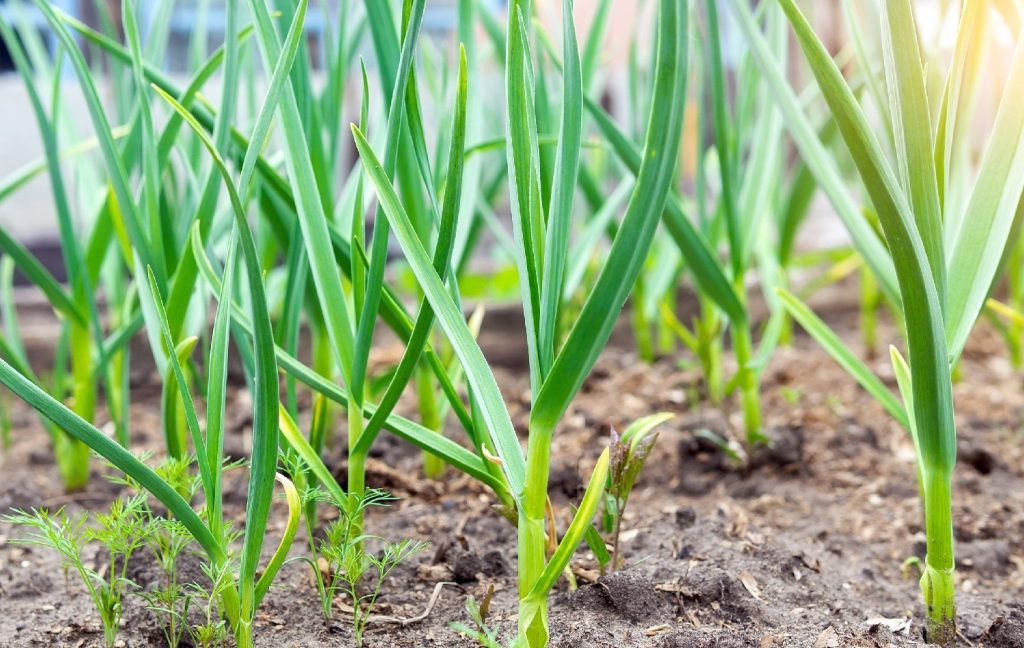
Yarrow, while technically a weed, is a fantastic rose companion thanks to its natural bee-attracting potential. These yellow and white-colored flowers will help to guide bees to red roses, in particular, that they may typically be colorblind to.
Yarrow fares well through drought conditions and can therefore keep attracting pollinators during dry periods for roses. This herb will also help to fill out the gaps in soil between your roses, growing persistently into the fall.
Parsley
Parsley is a potent-smelling herb that helps roses by producing noxious chemicals, useful in distracting and deterring garden pests. Parsley will also attract some insect predators to your rose plot, such as hoverflies, which happily feast on rampant aphid populations.
Parsley is commonly used as a ‘trap crop’, in that you may wish to plant it in a perimeter around your roses to stop garden pests from encroaching any further.
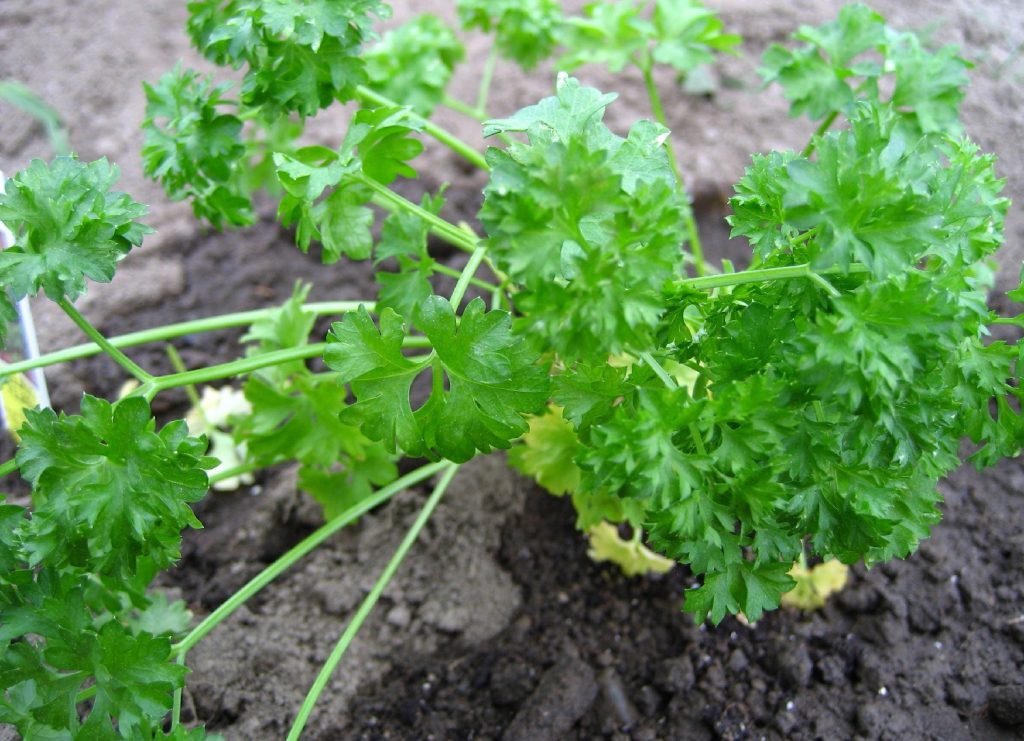
Chrysanthemums
Chrysanthemums are some of the hardest-working pest controllers in the garden and are therefore perfect for protecting sensitive roses from beetles, mites, and nematodes.
Conversely, ‘mums’ will attract useful insects such as the monarch butterfly, giving your roses a little extra appeal. These flowers will also bring aphid-hungry hoverflies to your rose bed.
There’s some disagreement over whether or not chrysanthemums attract bees, though planted together with roses, you’re likely to welcome double the pollinator crowd.
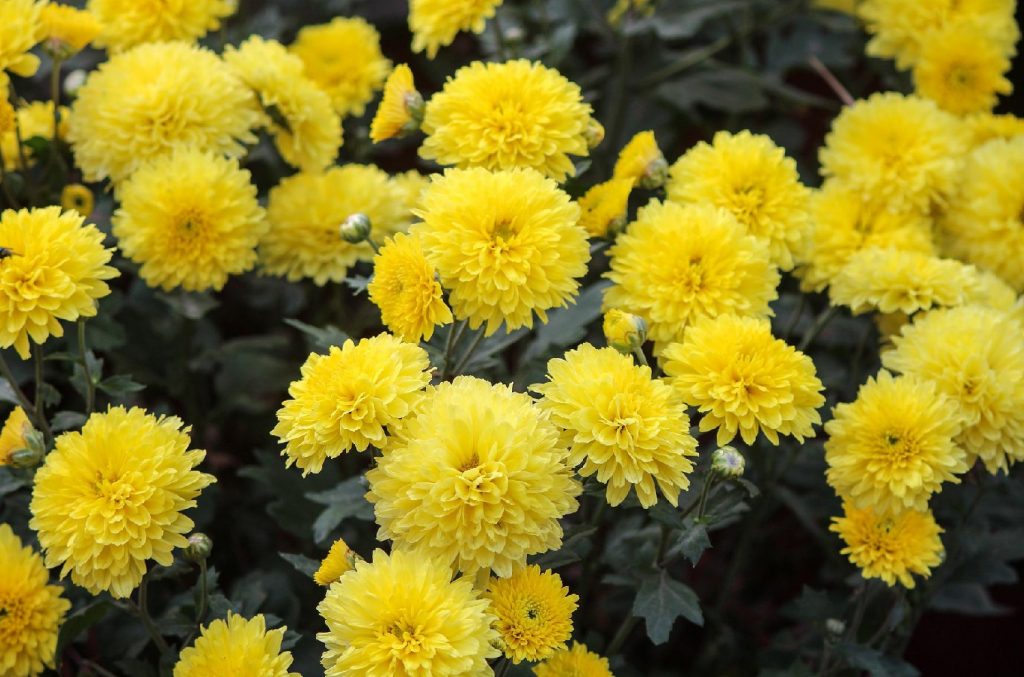
Nasturtiums
The nasturtium is a reliable companion plant for many vulnerable species, helping to defend roses by attracting hoverflies, and by deterring whiteflies and beetles.
Interestingly, the nasturtium can also prevent invasive pests such as the cabbage looper from laying eggs on your roses, simply by appearing more appealing as a host plant. It’s worth growing a clutch of nasturtiums as trap crops around your rose bushes.
Nasturtiums will also help to boost your roses’ pollinator appeal – these plants are colorful and wide-flowered, proving attractive to butterflies seeking somewhere to land and feed. Bees also enjoy feeding from nasturtiums as they are typically rich in nectar, proving to be a reliable source of energy.
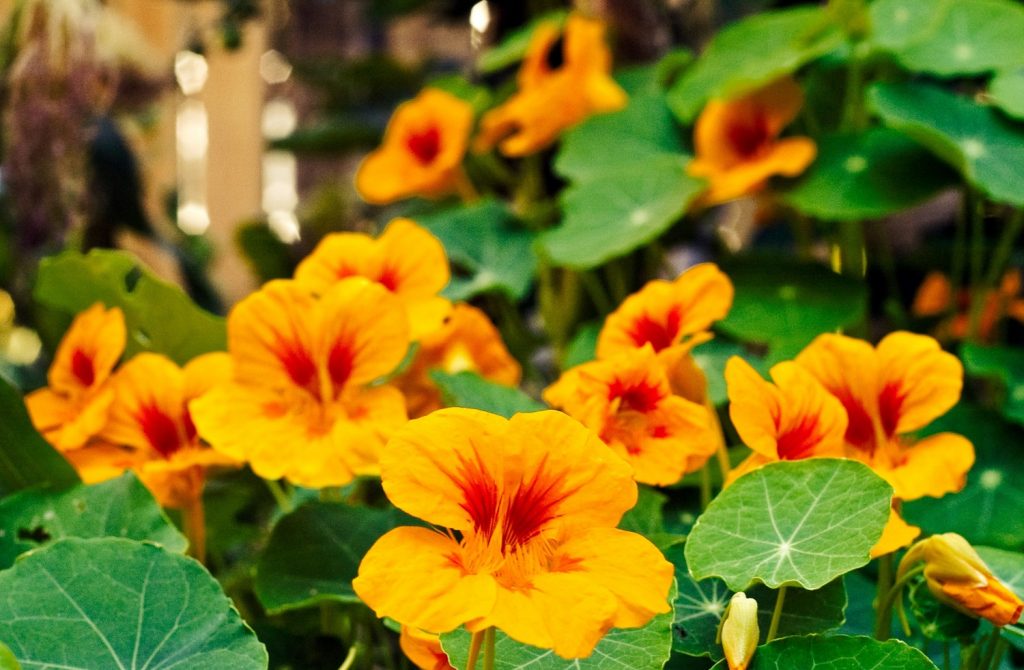
Plants you should NEVER grow alongside roses
The eight plants listed above are just a few specimens that will thrive alongside – and even protect – your roses. There are a few, conversely, that will simply never mix with these blooms.
Any plants likely to compete heavily for water, fertilizer, and airflow are unlikely to make good companions for roses. Additionally, the average rose is likely to demand a soil PH that leans towards acidic – which will naturally kill off many alkaline-loving plants (lavender being a strange exception to this rule).
Here are a handful of species commonly grown with roses by mistake.
Creeping dogwood
Planting creeping dogwood and roses together will likely lead to the latter developing root rot – or the former drying out and dying outright. Be sure to grow your creeping dogwood, or bunchberry, close by for the visual effect, just in a different bed and out of the sun.
Creeping dogwood is a shade-loving plant that thrives in deluges of water – whereas roses thrive on high drainage and direct sunlight. You can’t effectively grow one without the risk of killing the other.
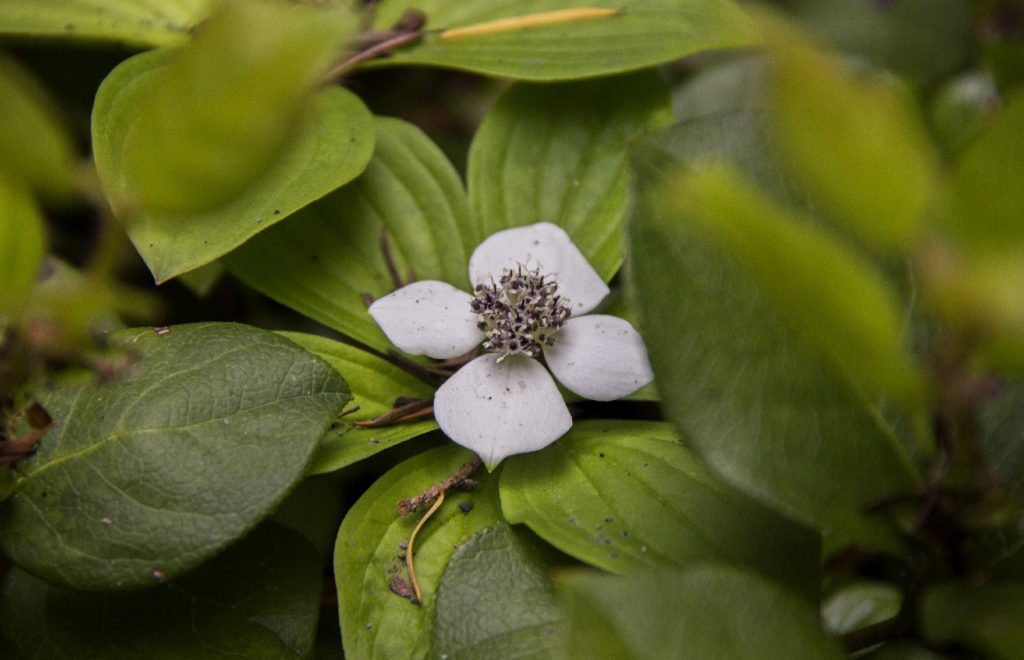
Fuchsias
Fuchsias love nutrient-rich, moist soil – and visually, they’d make great companions alongside roses. However, as they are fast-growing shrubs, they are likely to compete unfairly against the more timid species, such as various members of the rose family.
This is a flower that’s going to thrive well on its own, or with a species that’s just as fast to propagate. The rose stands to get nothing from this relationship other than temporary aesthetic blending – it’d soon die as the fuchsia takes over the plot.
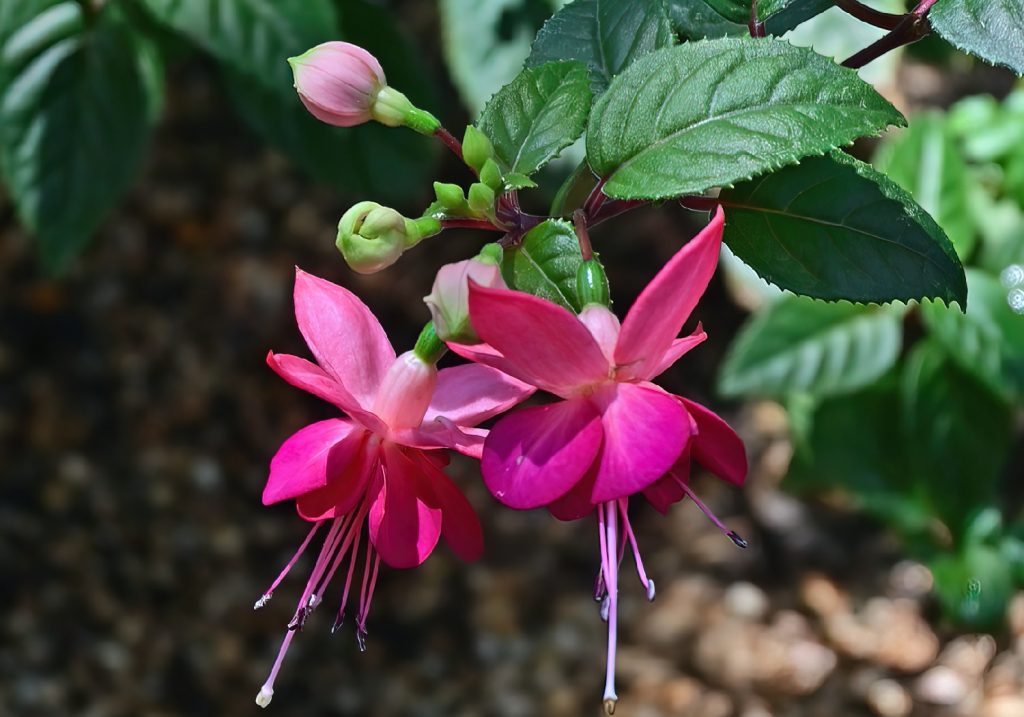
Morning Glories
While any ravenous and invasive plant species should be avoided growing alongside roses, the morning glory is particularly pervasive, highly demanding of nutrient-rich soil and water that most roses simply won’t fight for.
While visually delightful among rose heads, morning glories will grow abundantly to the point of choking roses of water, air, and even light. This is likely to happen very quickly in spring and summer – a mistake worth fixing as soon as possible.
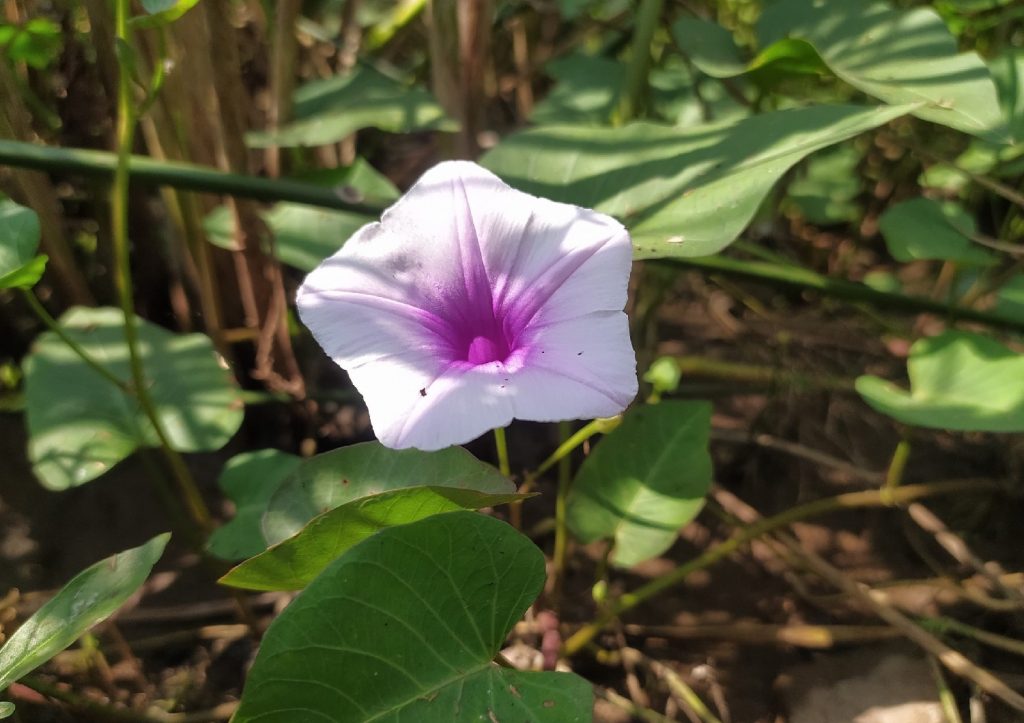
Is it easy to grow companion plants with roses?
Despite roses being some of the most common fixtures of gardens and flower beds across the US, some species are infamously tricky to grow – but it’s relatively easy to find a mix of other species to support your roses. Roses aren’t the most competitive or aggressive of plants despite their ubiquitousness – which means they often need a helping hand or two to attract pollinators fluttering by.
Roses, like many species growing hardy between USDA zones five and nine, thrive in full sun and with soil that never gets too moist. Providing you avoid planting flowers and growths that demand all of the nutrients for themselves, anecdotal evidence suggests roses actually prefer the company.
Growing companion plants around your roses will also help to reduce your need for pesticides and may help to boost their appeal to butterflies, hummingbirds, and other helpful visitors. Don’t be too quick to leave your roses growing solo – bringing in a few friends might just be the making of them.
